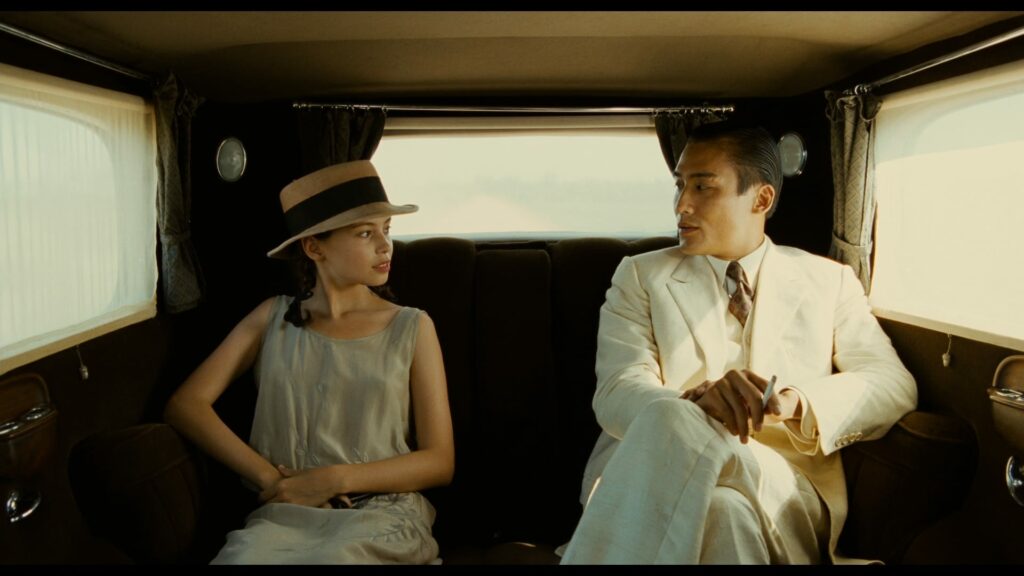Cinema is more than just a source of entertainment; it serves as a powerful medium for education, reflection, and cultural understanding.
Through its captivating stories and vivid imagery, film offers insights into the human experience, challenges societal norms, and fosters empathy by allowing audiences to step into the shoes of others.
From the historical narratives that shed light on past events to the thought-provoking documentaries that tackle pressing issues, cinema can be a profound teacher.
This article explores the valuable lessons we can glean from various genres of film, emphasizing how these lessons can inspire personal growth, enhance our understanding of the world, and encourage meaningful conversations about our shared humanity.
By examining the themes, characters, and narratives portrayed on screen, we can unlock the potential of cinema as a transformative tool for learning and connection.
The two most popular genre

Cinema, as a reflection of human experience, often gravitates towards universal themes that resonate deeply with audiences. Among the most popular genres worldwide are romance and adventure, two genres that symbolize fundamental aspects of human existence.
Romance, centered on love, relationships, and connection, mirrors the biological and emotional drive for procreation and the pursuit of companionship.
Adventure, on the other hand, represents the desire for self-discovery, growth, and the pursuit of personal development.
Together, these genres encapsulate two of the most meaningful pursuits in life: the search for connection and the journey toward self-fulfillment.
Romance: The Drive for Connection and Procreation

The popularity of romance films across cultures points to the universal need for love and companionship, which are deeply tied to human biology and the instinct for procreation. In most societies, love and relationships are central to the social fabric, often leading to family formation and the continuation of generations.
Romance films tap into this primal urge, showcasing the complexities of relationships, from the joy of newfound love to the heartache of loss and reconciliation. By portraying these intimate experiences, romantic films provide audiences with emotional catharsis, reaffirming the importance of connection in the human experience.
Beyond biological imperatives, romance films explore the emotional and psychological dimensions of love, highlighting the ways in which relationships shape individual identity and societal norms.
Themes such as loyalty, sacrifice, and personal growth within relationships offer viewers models for navigating their own emotional lives, making romance a genre that extends beyond entertainment to offer meaningful insights into human behavior and societal expectations.
The trope of a woman or man aiming above their league is a longstanding trend in romantic movies, capturing audiences with its inherent drama and emotional stakes. This dynamic often involves a protagonist who aspires to win the affection of someone perceived as more attractive, successful, or socially elite. This storyline resonates for several reasons.
First, it taps into the universal themes of desire and aspiration. Characters striving for love against the odds symbolize the human condition, where individuals often yearn for connections that seem out of reach. This longing creates a sense of relatability, allowing viewers to empathize with the protagonist’s struggles and aspirations. The tension between self-doubt and hope is a compelling narrative arc that keeps audiences engaged.
Adventure: The Pursuit of Self-Discovery and Development

Adventure films, by contrast, appeal to the human desire for exploration, risk, and personal growth. The genre’s emphasis on journeys—whether physical, psychological, or spiritual—mirrors the innate drive to push boundaries and seek self-improvement.
Through characters who embark on dangerous quests, face challenges, or confront their fears, adventure films depict the process of overcoming obstacles to achieve personal growth. This mirrors the real-world pursuit of self-development, a fundamental human drive tied to learning, achievement, and purpose.
Adventure films inspire viewers to explore the world around them, challenge the status quo, and discover their inner strengths.
Whether it’s an epic journey across foreign lands or an internal struggle to overcome personal demons, the adventure genre presents life as a continuous process of becoming. In many ways, it reflects the broader philosophical idea that life’s purpose is not simply to exist but to evolve, learn, and push the boundaries of human potential.
The Intersection of Romance and Adventure: Life’s Dual Pursuits

What makes romance and adventure so compelling is that they often intersect in meaningful ways. Both genres explore the tension between individual desires and external challenges, whether those challenges come in the form of societal expectations or personal fears.
The protagonist in a romance film may embark on a personal journey, learning to overcome emotional barriers to connect with another person, while the hero in an adventure film may discover love or companionship along the way, enriching their pursuit of self-development with the added complexity of human connection.
Together, these two genres represent the dual pursuits that define human existence: the quest for connection and belonging (romance) and the journey of self-discovery and personal evolution (adventure).
Both pursuits are not only deeply ingrained in human psychology but are also culturally significant, reflected in mythologies, literature, and, of course, cinema throughout history.
Cinema as a Mirror of Life’s Core Values
The dominance of romance and adventure in global cinema is no coincidence. These genres speak to the fundamental aspects of life that all humans experience: the search for meaningful relationships and the desire for growth and self-realization.
By exploring these themes, films provide audiences with not only entertainment but also profound reflections on the human condition. In doing so, cinema continues to serve as a mirror to life’s most essential pursuits—connection and self-development—offering guidance, inspiration, and insight into the paths we choose to follow.
Movies can provide insight into a country’s culture
Cinema is a powerful medium that often reflects the values, traditions, and social dynamics of the culture in which it is created. Through storytelling, visual aesthetics, and character portrayals, films offer a glimpse into the unique aspects of a society, from its language and customs to its beliefs and historical experiences.
Whether intentionally or unintentionally, movies provide a window into a country’s cultural identity, allowing audiences from different parts of the world to gain insight into the everyday lives, struggles, and triumphs of its people.
By analyzing the themes, settings, and narratives in films, we can uncover the underlying cultural nuances that shape a nation’s worldview, giving us a deeper understanding of its history, values, and societal norms. In this sense, cinema serves as a cultural ambassador, bridging the gap between nations and fostering a greater appreciation for diversity.
The American Cinema
American cinema has long been a dominant force in global entertainment, captivating audiences around the world with its powerful narratives and dynamic characters.
Universal values

At the heart of many American films is the moral struggle between right and wrong. This dichotomy is a central theme in countless genres, from crime dramas to fantasy epics, where characters must grapple with moral choices that ultimately define their fate.
Whether it’s the ethical dilemmas faced by the protagonist in a legal thriller or the internal struggle of a conflicted hero in a superhero film, American movies often frame their stories around the notion that individuals are responsible for upholding justice, fairness, and righteousness.
One of the key reasons for its widespread appeal lies in its emphasis on universal values, particularly those of morality and heroism.

From classic Westerns to contemporary superhero blockbusters, American films consistently explore themes that resonate across cultures—such as good versus evil, personal sacrifice, justice, and the triumph of the human spirit.
In the American cinematic tradition, morality is not just an abstract concept but a force that drives the narrative. Films such as To Kill a Mockingbird, Schindler’s List, and The Dark Knight focus on individuals standing up against injustice, highlighting the importance of moral courage.
These stories reinforce the idea that good must prevail over evil and that ethical behavior, no matter how difficult or dangerous, is essential to the survival of society. This moral framework is rooted in the broader American cultural narrative, where values like freedom, equality, and justice are foundational principles.

Equally central to American cinema is the concept of heroism. American films are known for their larger-than-life heroes who embody the ideals of bravery, selflessness, and the fight for justice. From coHeroism in American cinema is not limited to physical strength or bravery in battle.
It often includes moral fortitude and the willingness to make personal sacrifices for the greater good. Films like Saving Private Ryan or Erin Brockovich emphasize the hero’s willingness to endure hardship and risk for others, reinforcing the idea that true heroism is about self-sacrifice, not self-interest.
This portrayal of heroism aligns with a broader societal narrative in the United States, where individuals are encouraged to strive for greatness and contribute to the welfare of the community.
Self-development
The American dream is often reflected in character arcs that emphasize personal achievements and financial success and sometimes the downfall of character chasing power and money.

American cinema often maintains a certain level of purity, where explicit content is typically avoided in favor of a more subtle approach to visual taboos. While some scenes may be extremely graphic or violent, sexual content is usually portrayed more implicitly compared to European movies.
Perhaps regulations regarding age restrictions in the US are particularly strict when it comes to violence, sexual content, drug use, and explicit language.
This financial success brings with it the freedom to manage your time as you wish, a key aspect of the American Dream’s promise of financial independence.
The French Cinema
French cinema presents a more nuanced take on morality, frequently leaning into realism and existentialism.
While this approach allows for deeper exploration of the human condition and could be consider more realistic, it often lacks a sense of catharsis or an ideal to aspire to, since according to Jean-Paul Sartre we are a blank slate with the responsibility of creating our own values.
France, as a secular nation independent of religions and religious denominations, also reflects a society that often does not hold a belief in God and, consequently, in traditional concepts of morality or the highest divine value and harmony.
This lack of traditional morality often fosters cynicism, resentment, and even depression in favor of a larger freedom and originality. However, the culture is well-suited to cultivating profound expertise and technical mastery. Be it in food, fashion, luxury, or photography, this level of expertise is genuinely hard to surpass.
Moral relativism

Le Prénom, one of my favorite French films, is a mainstream comedy that carries a strong dose of cynicism. The story centers on a man who, during a dinner gathering, jokes about the name he plans to give his soon-to-be-born son, purely for his own amusement.
While the film features witty and intellectual dialogue between the guests, creating an enjoyable atmosphere, the main character’s joke ultimately spirals out of control, damaging the mood and straining the relationships among the guests.
Tensions rise among the guests, as some of his humor could cross the line, including a seemingly innoffensive joke about the Cambodian community.
Vincent Larcher : “I know they are Khmers but they still count.”
Though he speaks with sarcasm and irony, the mere mention of them in a dehumanizing way reflects underlying cultural attitudes and a kind of open disdain for “unrefined” individuals or population from developing countries which is the mere definition of cynicism and racism.
Cynical : “Someone who expresses without restraint feelings and opinions that go against accepted morals.”
Racial discrimination : “The belief that different races possess distinct characteristics, abilities, or qualities, especially so as to distinguish them as inferior or superior to one another.”
Clearly, this is a comedy, and no actual harm is inflicted on the Cambodian community. This example simply illustrates that, in the name of humor, the French are often willing to disregard the principle of “Do unto others as you would have them do unto you.” Comedy is also the best way to address harsh realities, and it only resonates when it contains a grain of truth. This undoubtedly reflects a cultural trait at least from the past, as for a country to colonize another, it must truly subscribe to this belief system. This perhaps shows that this shadow side has been integrated and therefore possibly controlled.
It’s noteworthy that this dinner features many ideal archetypes for French people : the intellectual teaching at La Sorbonne, the leftist educator advocating for minorities, the wife who is a business woman with a strong character and fighting spirit, and the musician whose subtlety leads everyone to believe he is gay. Interestingly, this character is portrayed as the most compassionate and decent among them, yet he is relegated to a stereotype of a gutless queerness almost as to reduced the value of traditional morality as something hypocritical.

Another film is Le dîner de cons, a hilarious comedy, though it’s hard to overlook the main theme of inviting someone with a low IQ just to ridicule them in front of friends, which is quite immoral and cynical. So much so that even his own wife is disgusted and can’t take it anymore. Perhaps the French excel at pushing the boundaries of optimal development by using comedy to address highly sensitive subjects.
A lack of catharsis

Intouchables follows the unlikely friendship between Philippe, a wealthy quadriplegic man, and Driss, a caregiver from a disadvantaged background. After being hired by Philippe, Driss brings humor and a fresh perspective to his life, helping him break free from his routine and reconnect with the world. Their bond transforms both of their lives, highlighting themes of friendship, resilience, and the power of human connection.
Now picture a film where the protagonist is a disadvantaged man who becomes friends with a wealthy aristocrat and art expert. Despite their strong bond, the protagonist ultimately returns to Pôle Emploi to look for a job and eventually decides to go back to his home country to live.
There is no catharsis in this movie, nor in reality. It’s as if two cultures share intimate moments only to part ways because they are ultimately incompatible. Their connection primarily stemmed from authenticity, a trait valued in French culture, in contrast to agreeableness and perhaps harmony.
Explicit realism

Blue Is the Warmest Color which is in my opinion the movie that portrayed France with the most accuracy, exemplifies the explicit realism characteristic of contemporary French cinema.
The film boldly portrays the intimate relationship between its two protagonists, exploring themes of love, passion, and heartbreak with unflinching honesty.
Its raw and vivid depictions of physical and emotional connections immerse viewers in the characters’ experiences, challenging societal norms and expectations surrounding love and identity.
By combining graphic intimacy with a deep emotional narrative, the film captures the complexities of human relationships, making it a poignant exploration of youth, desire, and self-discovery.
This movie brilliantly highlights the contrast between Parisians, who represent the intellectual elite, and suburbanites, who are depicted as more simple and morally and emotionally grounded even though oddly enough she is the one committing adultery.
What, in my opinion, makes this film and Abdellatif Kechiche’s works exceptional is their remarkable ability to portray real life with authenticity rather than feeling like mere works of fiction, while touching on universal subjects.
Realistic Romanticism

The moral behind The Lover, directed by Jean-Jacques Annaud, centers on themes of forbidden love, cultural differences, and the complexities of desire. Set in 1920s colonial Vietnam, the film explores the passionate and tumultuous relationship between a young French girl (underage) and a wealthy Chinese man.
One of the key morals of the story is the exploration of love as a powerful force that transcends societal norms and boundaries. Their relationship challenges the rigid class and racial divisions of the time, illustrating how love can flourish even in the face of societal disapproval. However, the film also highlights the consequences of such a passionate affair, showcasing the limitations imposed by family expectations, cultural conflicts, and the harsh realities of life.
Additionally, The Lover emphasizes the fleeting nature of youth and passion. The relationship, while deeply intense and transformative, ultimately faces the inevitability of separation and loss, reminding viewers that even the most profound connections can be ephemeral. This juxtaposition of love’s beauty and its impermanence serves as a poignant reflection on the complexities of human relationships.
This type of theme, featuring nearly explicit scenes, would be considered a major taboo in most countries. Having the freedom to delve into such subjects is, in itself, something of a miracle. Because without the ability to delve deeper into the human psyche through art, we cannot move forward as a species.
The Korean Cinema
Korean cinema and drama have gained international acclaim for their unique storytelling, rich character development, and emotional depth. Often characterized by a blend of genres, they seamlessly weave elements of romance, thriller, and dark comedy.
Korean dramas, known for their engaging plots and relatable characters, typically explore themes of love, family, and societal issues, captivating audiences both domestically and abroad.
Notable films and series have garnered a global following, showcasing the creativity and cultural nuances of South Korea, with productions like Parasite and Squid Game achieving significant recognition on the world stage.
The culture of beauty

Korean culture has a strong obsession with beauty, making it the leading country in cosmetic surgery. When watching dramas, it’s evident that characters frequently embody ideal beauty standards.
Dramas also emphasize inner beauty, as characters often reflect their American counterparts but with an even greater sense of modesty and compassion, particularly among men which are definitely categorize as feminine traits in the west.
The contrast between class

Korean films often depict a stark contrast between social classes, highlighting the disparities between the affluent and the less fortunate. This is commonly explored through narratives that showcase the struggles of individuals from lower socioeconomic backgrounds as they navigate a world dominated by wealth and privilege.
Movies like Parasite illustrate how class divisions influence relationships and opportunities, exposing the tensions and conflicts that arise when these worlds collide. Such portrayals not only reflect the realities of South Korean society but also resonate universally, prompting audiences to consider the implications of class inequality.
They even have a specific term for wealthy business families: “Chaebol,” which wield significant influence over the country’s politics.
The ultra violence

Ultra-violence in some Korean films serves as a provocative storytelling device that reflects the darker aspects of society and human nature.
Movies like Oldboy and I Saw the Devil utilize graphic violence to explore themes of revenge, trauma, and moral ambiguity. This intense portrayal often aims to challenge viewers’ perceptions and provoke emotional reactions, pushing the boundaries of conventional filmmaking.
While the violence can be shocking, it also serves to underscore the characters’ psychological struggles and the societal issues they face, ultimately leaving a lasting impact on the audience.
The two real genre of cinema
Cinema can primarily be categorized into two main genres: exploration and entertainment.

Exploration films delve into complex themes, pushing boundaries and challenging societal norms. They often aim to provoke thought and inspire dialogue, inviting viewers to reflect on deep philosophical questions, cultural issues, or human experiences.
These films may be character-driven or focus on intricate narratives that explore the human condition, societal struggles, and existential dilemmas. Examples include dramas and documentaries that confront real-life challenges or provide insight into different cultures and perspectives.
They also function like music, uniting people by imparting meaning through shared experiences and moral values, protecting them by steering them away from nihilism.

On the other hand, entertainment films prioritize enjoyment and escapism. These movies are designed to captivate audiences through engaging storytelling, humor, action, or romance, providing a sense of joy, excitement, or thrill.
They often rely on familiar tropes, charismatic characters, and fast-paced plots to keep viewers engaged.
Blockbusters, romantic comedies, and action films typically fall under this category, offering lighthearted experiences that allow audiences to unwind and immerse themselves in fictional worlds.
Together, these two genres reflect the multifaceted nature of cinema, serving both as a mirror to society and as a source of joy and distraction for audiences.
Conclusion
A diverse range of cultures is essential for creating a captivating world, even as certain ideal and shared cultural elements begin to emerge. This variety enriches our experiences, broadening our perspectives and fostering understanding among different communities.
When multiple cultures interact, they bring unique traditions, values, and viewpoints that contribute to a vibrant tapestry of human experience. This cross-pollination often leads to the emergence of common cultural touchpoints—shared ideas and practices that resonate across boundaries. For instance, the universal themes of love, family, and community are depicted in various ways across cultures, yet they unite us in our shared human experience.

Moreover, this cultural diversity inspires creativity and innovation. Artists, writers, and filmmakers draw on a myriad of influences, resulting in original works that reflect a fusion of ideas and aesthetics. This creative synergy can produce groundbreaking art, music, and literature, pushing the boundaries of what is possible and challenging us to think in new ways.
Furthermore, exposure to diverse cultures promotes empathy and social cohesion. By engaging with different cultural narratives, we can develop a deeper understanding of others’ experiences, fostering connections and breaking down stereotypes. This engagement is vital in an increasingly globalized world, where interactions between cultures are more frequent than ever.
In summary, while common cultural points may emerge, it is the richness and variety of different cultures that truly make our world interesting and dynamic. Embracing this diversity not only enhances our collective human experience but also encourages creativity, empathy, and mutual respect among individuals from all walks of life.


GIPHY App Key not set. Please check settings